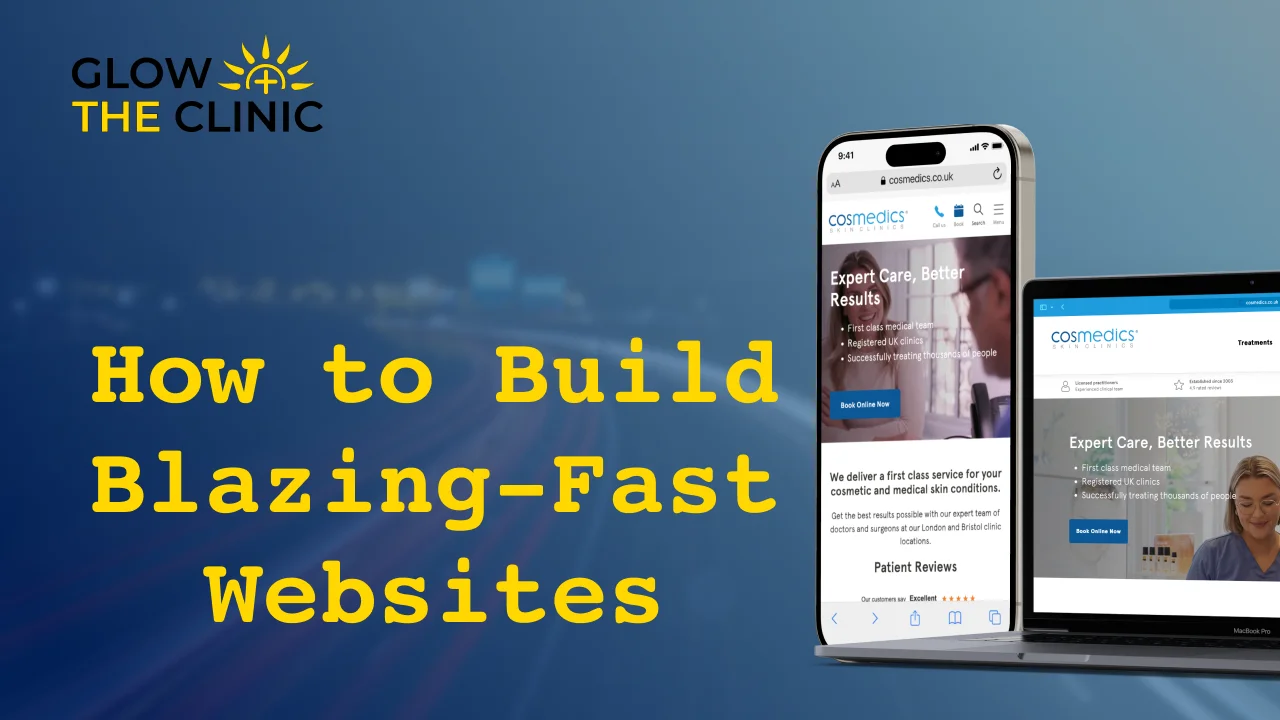
How to Build Blazing-Fast Websites?
In today’s fast-paced digital world, attention spans are shorter than ever. Research shows that if a website doesn’t load within a few seconds, users are likely to leave and seek out a faster alternative. For healthcare providers, this means that a slow-loading website can lead to lost potential patients and decreased trust. This is why having a blazing-fast website is crucial for your clinic's success.
Why Website Speed Matters
Patient Experience and Engagement
A fast-loading website enhances the overall user experience. Patients visiting your site expect quick access to information, whether it's booking an appointment, checking services, or reading patient reviews. Slow load times can frustrate visitors, causing them to leave your site before taking any action. A blazing-fast website keeps users engaged, reduces bounce rates, and increases the likelihood of converting visitors into patients.
Search Engine Rankings
Website speed is a significant factor in search engine optimization (SEO). Google and other search engines prioritize fast-loading websites because they provide a better user experience. If your clinic's website is slow, it could rank lower in search results, making it harder for potential patients to find you online. A fast website improves your visibility and helps attract more visitors from search engines.
Conversions and Revenue
Every second counts when it comes to website loading speed. Studies show that even a one-second delay can reduce conversions by up to 7%. For healthcare providers, this could mean losing out on potential appointments and revenue. A fast website ensures that patients have a smooth experience, increasing the chances they will book an appointment, complete a contact form, or sign up for your newsletter.
How to Build a Blazing-Fast Website for Your Clinic
Building a fast website requires careful planning and the right strategies. Here are some key steps to ensure your website performs at lightning speed:
Optimize Images and Media
Large images and videos can significantly slow down your website. Ensure that all media files are optimized for web use by compressing them without sacrificing quality. Use modern formats like WebP for images and MP4 for videos, and always define the dimensions of images to avoid layout shifts that can affect loading times.
Leverage Browser Caching
Browser caching stores certain elements of your website in a visitor's browser, so they don't have to reload everything each time they visit. This reduces server load and speeds up the website for returning visitors. Set an appropriate caching duration for static assets like images, CSS, and JavaScript files.
Minimize HTTP Requests
Each element on your webpage, such as images, scripts, and stylesheets, requires a separate HTTP request. The more requests your site makes, the slower it will load. Minimize HTTP requests by combining files where possible and using CSS sprites to reduce the number of images.
Use a Content Delivery Network (CDN)
A CDN distributes your website's content across multiple servers around the world, ensuring that users are served content from the server closest to them. This reduces latency and improves load times, especially for users who are geographically far from your primary server.
Implement GZIP Compression
GZIP compression reduces the size of your website files, making them quicker to load in the browser. Most web servers support GZIP compression, and it’s a simple yet effective way to speed up your site.
Prioritize Mobile Optimization
With more people using mobile devices to access the internet, it's essential to ensure your website is optimized for mobile users. Use responsive design techniques to ensure your site looks great and loads quickly on all devices. Additionally, consider implementing Accelerated Mobile Pages (AMP) to provide a faster, more streamlined experience for mobile users.
Choose a Reliable Hosting Provider
Your hosting provider plays a critical role in your website's speed. Invest in a reliable hosting provider that offers high-performance servers, SSD storage, and good uptime guarantees. Avoid shared hosting plans, which can slow down your site if other websites on the same server experience high traffic.
Monitor and Test Regularly
Regularly monitor your website's performance using tools like Google PageSpeed Insights, GTmetrix, or Pingdom. These tools provide insights into what's slowing down your site and offer actionable recommendations for improvement. Consistently testing and optimizing your site ensures it remains fast and efficient.
Conclusion
For healthcare providers, a blazing-fast website is not just a luxury; it's a necessity. It directly impacts patient experience, search engine rankings, and conversions, all of which are crucial for growing your practice. By following the steps outlined above, you can build a website that loads quickly, provides an excellent user experience, and helps you stand out in the competitive healthcare market.
At Glow The Clinic, we specialize in building blazing-fast, patient-centric websites that drive results.
For more information on how Glow The Clinic can help you build a high-performing, contact us today!
